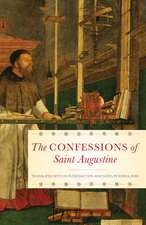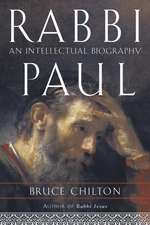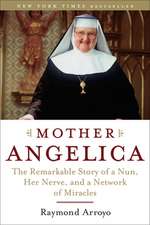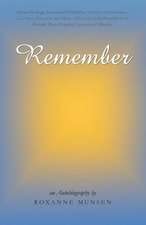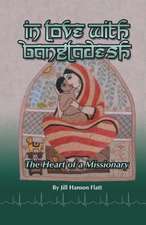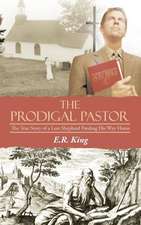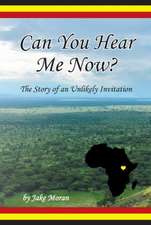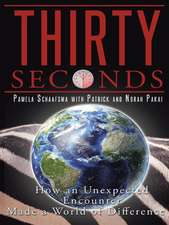The Pope Who Quit: A True Medieval Tale of Mystery, Death, and Salvation
Autor Jon M. Sweeneyen Limba Engleză Paperback – 31 ian 2012
At the close of the tumultuous Middle Ages, there lived a man who seemed destined from birth to save the world. His name was Peter Morrone, a hermit, a founder of a religious order, and, depending on whom you talk to, a reformer, an instigator, a prophet, a coward, a saint, and possibly the victim of murder. A stroke of fate would, practically overnight, transform this humble servant of God into the most powerful man in the Catholic Church. Half a year later, he would be the only pope in history to abdicate the chair of St. Peter, an act that nearly brought the papacy to its knees. What led him to make that decision and what happened afterward would be shrouded in mystery for centuries. The Pope Who Quit pulls back the veil of secrecy on this dramatic time in history and showcases a story that involves deadly dealings, apocalyptic maneuverings, and papal intrigue.
Preț: 107.68 lei
Nou
Puncte Express: 162
Preț estimativ în valută:
20.60€ • 21.56$ • 17.12£
20.60€ • 21.56$ • 17.12£
Carte disponibilă
Livrare economică 13-27 martie
Preluare comenzi: 021 569.72.76
Specificații
ISBN-13: 9780385531894
ISBN-10: 0385531893
Pagini: 288
Dimensiuni: 132 x 203 x 20 mm
Greutate: 0.25 kg
Editura: IMAGE
ISBN-10: 0385531893
Pagini: 288
Dimensiuni: 132 x 203 x 20 mm
Greutate: 0.25 kg
Editura: IMAGE
Notă biografică
JON M. SWEENEY is an author, a book publisher, and a popular speaker. He is the editor of The Road to Assisi: The Essential Biography of St. Francis and the author of many books, including Verily, Verily: The KJV—400 Years of Influence and Beauty. He lives in Vermont with his wife and three children.
Extras
PROLOGUE
Toward the close of the Middle Ages, in 1285, there lived three men whose lives would intersect and forever change history. Each was a man of power. Each was stubborn. Each was skilled at the life and work to which he seemed destined from birth.
The most important of the three and the central fi gure of this book is Peter Morrone. His surname comes from the mountain that he called home for most of his life. Peter was a monk and the founder of a religious order, and depending on whom you talk to, he was also a reformer, an instigator, a prophet, a coward, a fool, and a saint. He was very much a man swept up in history, and practically overnight he would be transformed from a humble hermit into Pope Celestine V, the most powerful man in the Catholic Church. He would also become the only man in history to walk away from his job, vacating the chair of St. Peter before he died.
If Peter Morrone lived today in the mountains outside of Rome or Los Angeles or New Delhi he might be a celebrity guru. From early in his life he was a man with a mountain, or montagna, and made his casa di montagna. If he’d lived in the twenty- first century, talks to his fellow monks might be smuggled out of his enclave as digital audio files, soon to be packaged and sold by a big New York concern. He would emerge every now and then to speak privately with world leaders, who would also seek him out for personal counsel and, perhaps, photo opportunities. Peter was this sort of figure in his day.
But history rarely revolves around a single individual, and the story of Peter Morrone- cum- Celestine V is no exception. Although fellow monks and supporters would move in and out of Peter’s rather long life, there are two men in particular whose power and ambition would directly affect the life of this complex hermit, and, by extension, their actions would influence the world.
The first of these was Charles II of Anjou (1254ߝ 1309), supporter, corruptor, the ingratiating king of Naples. Having inherited his crown from a much more powerful father in January 1285, Charles II learned quickly how to use influential men, as well as to be of use to them. Charles would keep the hermit pope on a tight leash.
The second man who is central to our story is Cardinal Benedict Gaetani, one of the eleven cardinal- electors who chose Peter Morrone as pope. Born as Benedetto, son of Gaetani, into a prominent family in about 1235, he was a true Roman and the nephew of Pope Alexander IV (1254ߝ 61). Well educated from youth, he trained as a lawyer, was skilled in canon law, and was made a member of the curia at the age of twenty- nine. For the next thirty years Gaetani gained a reputation as a supremely competent papal legate who could represent the Holy See in confronting heresy and spiritual rebellion in places like England and France, asserting moral authority when heretical movements rose to the surface. He would become Celestine V’s trusted advisor and would help the hermit pope resign from offi ce— perhaps conniving for his own self- interest because he would take the chair of St. Peter only eleven days later.
Celestine V’s abdication was the climax of a fi ve- month reign, from July to December of 1294, during which time he served as Christ’s supreme representative on earth, and then quit. As we will see, nothing went well for anyone, except perhaps for Gaetani.
When a man is raised to the chair of St. Peter he is not elected for a certain term or period of time. He becomes pope for life. Yet throughout the 2,000- year history of the papacy Peter Morrone is the only man who has resigned and walked away.
There are three reasons I wanted to tell this story. First, I have a fascination with the Middle Ages. In particular, the twelfth and thirteenth centuries were a time of faith, violence, and discovery, a time that is replete with dramatic stories and pivotal moments. I have written and edited a number of books on the life and impact of some of this period’s most colorful and recognizable figures, such as Francis of Assisi. In contrast, the colorful story of Celestine V is hardly known.
I first heard about Celestine V a decade ago while doing research in Italy for a book about the inheritors of the spiritual legacy of Saint Francis. This “angelic pope”— as some of his contemporaries called him— was condemned to mill around outside the gates of the Inferno for eternity by Dante, who may have actually known him. Dante wrote, “I looked, and I beheld the shade of him / Who made through cowardice the great refusal.”2 This was the poet’s way of saying that our subject was a quitter and a weakling. But how could Celestine be both “angelic” and “cowardly”? How could he be pope and also deserving of hell? Clearly, there’s a bundle of contradictions to this story that need to be sorted out.
Further, I wondered how history would be different if Celestine had stayed in power, or if he’d met with any success whatsoever as holy father during the fi fteen weeks of his reign. How did his election fill the imaginations of everyday people with hope for change? How did his disastrous reign bring that hope to an end? “Was he conquered by his innate powerlessness, or by a combination of abnormal rascality and intrigue?” asked the English writer Anne MacDonell a century ago.3 These questions I set out to answer.
As a cradle Protestant who converted to Catholicism after a number of years of searching and discernment, I’m probably drawn more quickly than others to stories of spiritual reformers. Celestine in his heart was a reformer. During the sixty years he spent as a hermit, he responded to laxity with stern measures, and sought a return to original principles. He could not find a religious order that would allow him to pray and fast, nor could he find the solitude he required. In founding his own ascetical order he modeled it on the legends of John the Baptist, living deliberately in desert- like conditions of want, wearing a hair shirt as penance, and fasting continuously (except on Sunday). Peter’s desires for a Church that did what was right were legendary. Some over the years have seen him as a forerunner of later Catholics such as Martin Luther, whose writings set off the Protestant Reformation, resulting in a complete split of the world’s religious strata. But that comparison is far- fetched. Nothing of that sort would have ever occurred to Peter Morrone, let alone to the reform- minded in 1294. Still one explanation for the perplexities of his life was that he was an idealist.
Third, Peter Morrone aka Celestine V (you’ll notice that I use both names throughout the book) is still making headlines in the twenty- first century. A year after I began my research, on April 6, 2009, an earthquake hit L’Aquila, Italy, shaking everything including the walls of the great church that Peter Morrone built, and in which he was later buried. Aftershocks followed for the next two days, and one of those brought the ornate roof of the basilica crashing down into the nave. On April 8, 2009, media all over the world reported on fi refi ghters rushing into the building to retrieve the sacred remains and relics of this angelic pope. The essentials of Celestine V’s story were told and retold for days. The saint’s remains were placed in safer quarters and then brought back to the basilica in a glass casket. In contemporary times prominent Catholics differ quite considerably from Dante in their assessment of Celestine. They were quoted in Italian newspapers referring to the discovery of the unharmed remains as yet another miracle at the hand of Saint Celestine V (he was canonized seventeen years after his death, and miracles of all sorts have been attributed to his intercession over the last six hundred years).
Four years earlier, in the winter of 2004ߝ 5, Celestine was also discussed in media throughout the world when the Vatican’s secretary of state hinted that the ailing Pope John Paul II was considering retirement. Celestine was featured in print and cinema as a result of Dan Brown’s blockbuster Angels & Demons (chapter 88 of the book, published in 2000; and then in the film, 2009). Yet Brown wasn’t the first modern writer to mention Celestine.
The angelic pope was the subject of a historical novel by Ignazio Silone, published in Italian in 1968 and in English as The Story of a Humble Christian in 1970. The London playwright Peter Barnes wrote about Celestine in Sunsets and Glories, which premiered in Leeds, England, in June 1990. And I suspect that the story of Peter must have inspired Morris West to write his blockbuster novel The Clowns of God (1981) about a fi ctional twentieth- century pope who abdicates under duress. The Clowns of God spent twenty- two weeks on the New York Times bestseller list when it was released in hardcover.
And then there is one final reason that the topic of this book should interest readers today— and this emerged after I began writing. Pope Benedict XVI has recently aligned himself with the memory and legacy of this hermit pope from the medieval Catholic past. On April 29, 2009, when Pope Benedict visited Celestine’s tomb in the aftermath of the earthquake that struck L’Aquila earlier in the month he did more than say a simple prayer and pay his respects at the Italian saint’s shrine. Without explanation the pope paused for several minutes, removed the pallium from around his shoulders, and laid it gently on Celestine’s glass- encased tomb. A pallium is a religious garment that is shaped like a Y and resembles a long, stiff scarf. It is one of the principal symbols of a pope’s episcopal authority. It seems that Pope Benedict was communicating that something lies unfinished in the worldwide Catholic Church, and it is somehow connected with Celestine V.
There are very few firsthand accounts of the life of the famous man who left the chair of St. Peter empty. The Middle Ages is a time for which we have no attendance records at schools, no physician’s records or census records. The most reliable sources of information are court and church annals, but those records that have not been lost to fire or the elements can be unreliable. There is often almost nothing to firmly place a person on the planet in those days. Illiteracy was common, and few people wrote about themselves and others. In fact, one of the reasons that Celestine V’s election as pope was so controversial was that he was seen as unschooled compared to the privileged men who held important ecclesiastical offi ces. And he understood very little Latin, the official language of the Church.
In telling Peter’s story I have relied on a variety of sources. Peter wrote an Autobiography, which was unusual for that era, and we can trust it for some of the details of his early life. In addition, I have combed through histories of the medieval papacy, in which Celestine V stands out but only as one curiosity among many. There are many histories of the mendicant orders (all five, including the Franciscans and Dominicans, were founded in Peter’s lifetime), medieval hermits, heretical movements, and the multifaceted Crusades (the fifth through ninth occurred while Peter was living), from which I gleaned many of the details herein. We are witnessing rapid growth in the availability of English translations of documents from this time period in Italy; these works illuminate subjects such as the local structures of religious and secular power, the dependence of rural areas on the cities, warfare and violence, law and order, disease and medicine, education, and family.4 I have used these sources and more to paint a picture of Peter’s era, his places, his people, and the circumstances of his life.
There are additional historical records of thirteenth-century Catholic piety, local religious rituals, infi ghting between factions within the Church, the growing independence of laypeople— all of which serve to illuminate Peter’s actions as a sibling, son, hermit, abbot, founder of an order, traveling pilgrim, builder of churches, sinner, penitent, fund- raiser, and faithful Catholic. I describe Peter and characters in Peter’s story, and I imagine his spiritual brothers who sat with him at the end of his life in a castle prison cell and listened as he told them stories. I cast a spotlight on the members of the papal curia (advisers, administrators, counselors, financial managers) who surrounded and confounded Celestine during his fi fteen disastrous weeks as Christ’s vicar. Some of these scenes are imagined after spending many hours looking at manuscript illuminations, scrutinizing paintings (there are just a few renderings of him), and reading letters and historical accounts of men and women from the place and time. Using all of these resources, I aim to tell the story of what it was like to be a hermit and a pope in the turbulent, hopeful, and violent late thirteenth century.
Toward the close of the Middle Ages, in 1285, there lived three men whose lives would intersect and forever change history. Each was a man of power. Each was stubborn. Each was skilled at the life and work to which he seemed destined from birth.
The most important of the three and the central fi gure of this book is Peter Morrone. His surname comes from the mountain that he called home for most of his life. Peter was a monk and the founder of a religious order, and depending on whom you talk to, he was also a reformer, an instigator, a prophet, a coward, a fool, and a saint. He was very much a man swept up in history, and practically overnight he would be transformed from a humble hermit into Pope Celestine V, the most powerful man in the Catholic Church. He would also become the only man in history to walk away from his job, vacating the chair of St. Peter before he died.
If Peter Morrone lived today in the mountains outside of Rome or Los Angeles or New Delhi he might be a celebrity guru. From early in his life he was a man with a mountain, or montagna, and made his casa di montagna. If he’d lived in the twenty- first century, talks to his fellow monks might be smuggled out of his enclave as digital audio files, soon to be packaged and sold by a big New York concern. He would emerge every now and then to speak privately with world leaders, who would also seek him out for personal counsel and, perhaps, photo opportunities. Peter was this sort of figure in his day.
But history rarely revolves around a single individual, and the story of Peter Morrone- cum- Celestine V is no exception. Although fellow monks and supporters would move in and out of Peter’s rather long life, there are two men in particular whose power and ambition would directly affect the life of this complex hermit, and, by extension, their actions would influence the world.
The first of these was Charles II of Anjou (1254ߝ 1309), supporter, corruptor, the ingratiating king of Naples. Having inherited his crown from a much more powerful father in January 1285, Charles II learned quickly how to use influential men, as well as to be of use to them. Charles would keep the hermit pope on a tight leash.
The second man who is central to our story is Cardinal Benedict Gaetani, one of the eleven cardinal- electors who chose Peter Morrone as pope. Born as Benedetto, son of Gaetani, into a prominent family in about 1235, he was a true Roman and the nephew of Pope Alexander IV (1254ߝ 61). Well educated from youth, he trained as a lawyer, was skilled in canon law, and was made a member of the curia at the age of twenty- nine. For the next thirty years Gaetani gained a reputation as a supremely competent papal legate who could represent the Holy See in confronting heresy and spiritual rebellion in places like England and France, asserting moral authority when heretical movements rose to the surface. He would become Celestine V’s trusted advisor and would help the hermit pope resign from offi ce— perhaps conniving for his own self- interest because he would take the chair of St. Peter only eleven days later.
Celestine V’s abdication was the climax of a fi ve- month reign, from July to December of 1294, during which time he served as Christ’s supreme representative on earth, and then quit. As we will see, nothing went well for anyone, except perhaps for Gaetani.
When a man is raised to the chair of St. Peter he is not elected for a certain term or period of time. He becomes pope for life. Yet throughout the 2,000- year history of the papacy Peter Morrone is the only man who has resigned and walked away.
There are three reasons I wanted to tell this story. First, I have a fascination with the Middle Ages. In particular, the twelfth and thirteenth centuries were a time of faith, violence, and discovery, a time that is replete with dramatic stories and pivotal moments. I have written and edited a number of books on the life and impact of some of this period’s most colorful and recognizable figures, such as Francis of Assisi. In contrast, the colorful story of Celestine V is hardly known.
I first heard about Celestine V a decade ago while doing research in Italy for a book about the inheritors of the spiritual legacy of Saint Francis. This “angelic pope”— as some of his contemporaries called him— was condemned to mill around outside the gates of the Inferno for eternity by Dante, who may have actually known him. Dante wrote, “I looked, and I beheld the shade of him / Who made through cowardice the great refusal.”2 This was the poet’s way of saying that our subject was a quitter and a weakling. But how could Celestine be both “angelic” and “cowardly”? How could he be pope and also deserving of hell? Clearly, there’s a bundle of contradictions to this story that need to be sorted out.
Further, I wondered how history would be different if Celestine had stayed in power, or if he’d met with any success whatsoever as holy father during the fi fteen weeks of his reign. How did his election fill the imaginations of everyday people with hope for change? How did his disastrous reign bring that hope to an end? “Was he conquered by his innate powerlessness, or by a combination of abnormal rascality and intrigue?” asked the English writer Anne MacDonell a century ago.3 These questions I set out to answer.
As a cradle Protestant who converted to Catholicism after a number of years of searching and discernment, I’m probably drawn more quickly than others to stories of spiritual reformers. Celestine in his heart was a reformer. During the sixty years he spent as a hermit, he responded to laxity with stern measures, and sought a return to original principles. He could not find a religious order that would allow him to pray and fast, nor could he find the solitude he required. In founding his own ascetical order he modeled it on the legends of John the Baptist, living deliberately in desert- like conditions of want, wearing a hair shirt as penance, and fasting continuously (except on Sunday). Peter’s desires for a Church that did what was right were legendary. Some over the years have seen him as a forerunner of later Catholics such as Martin Luther, whose writings set off the Protestant Reformation, resulting in a complete split of the world’s religious strata. But that comparison is far- fetched. Nothing of that sort would have ever occurred to Peter Morrone, let alone to the reform- minded in 1294. Still one explanation for the perplexities of his life was that he was an idealist.
Third, Peter Morrone aka Celestine V (you’ll notice that I use both names throughout the book) is still making headlines in the twenty- first century. A year after I began my research, on April 6, 2009, an earthquake hit L’Aquila, Italy, shaking everything including the walls of the great church that Peter Morrone built, and in which he was later buried. Aftershocks followed for the next two days, and one of those brought the ornate roof of the basilica crashing down into the nave. On April 8, 2009, media all over the world reported on fi refi ghters rushing into the building to retrieve the sacred remains and relics of this angelic pope. The essentials of Celestine V’s story were told and retold for days. The saint’s remains were placed in safer quarters and then brought back to the basilica in a glass casket. In contemporary times prominent Catholics differ quite considerably from Dante in their assessment of Celestine. They were quoted in Italian newspapers referring to the discovery of the unharmed remains as yet another miracle at the hand of Saint Celestine V (he was canonized seventeen years after his death, and miracles of all sorts have been attributed to his intercession over the last six hundred years).
Four years earlier, in the winter of 2004ߝ 5, Celestine was also discussed in media throughout the world when the Vatican’s secretary of state hinted that the ailing Pope John Paul II was considering retirement. Celestine was featured in print and cinema as a result of Dan Brown’s blockbuster Angels & Demons (chapter 88 of the book, published in 2000; and then in the film, 2009). Yet Brown wasn’t the first modern writer to mention Celestine.
The angelic pope was the subject of a historical novel by Ignazio Silone, published in Italian in 1968 and in English as The Story of a Humble Christian in 1970. The London playwright Peter Barnes wrote about Celestine in Sunsets and Glories, which premiered in Leeds, England, in June 1990. And I suspect that the story of Peter must have inspired Morris West to write his blockbuster novel The Clowns of God (1981) about a fi ctional twentieth- century pope who abdicates under duress. The Clowns of God spent twenty- two weeks on the New York Times bestseller list when it was released in hardcover.
And then there is one final reason that the topic of this book should interest readers today— and this emerged after I began writing. Pope Benedict XVI has recently aligned himself with the memory and legacy of this hermit pope from the medieval Catholic past. On April 29, 2009, when Pope Benedict visited Celestine’s tomb in the aftermath of the earthquake that struck L’Aquila earlier in the month he did more than say a simple prayer and pay his respects at the Italian saint’s shrine. Without explanation the pope paused for several minutes, removed the pallium from around his shoulders, and laid it gently on Celestine’s glass- encased tomb. A pallium is a religious garment that is shaped like a Y and resembles a long, stiff scarf. It is one of the principal symbols of a pope’s episcopal authority. It seems that Pope Benedict was communicating that something lies unfinished in the worldwide Catholic Church, and it is somehow connected with Celestine V.
There are very few firsthand accounts of the life of the famous man who left the chair of St. Peter empty. The Middle Ages is a time for which we have no attendance records at schools, no physician’s records or census records. The most reliable sources of information are court and church annals, but those records that have not been lost to fire or the elements can be unreliable. There is often almost nothing to firmly place a person on the planet in those days. Illiteracy was common, and few people wrote about themselves and others. In fact, one of the reasons that Celestine V’s election as pope was so controversial was that he was seen as unschooled compared to the privileged men who held important ecclesiastical offi ces. And he understood very little Latin, the official language of the Church.
In telling Peter’s story I have relied on a variety of sources. Peter wrote an Autobiography, which was unusual for that era, and we can trust it for some of the details of his early life. In addition, I have combed through histories of the medieval papacy, in which Celestine V stands out but only as one curiosity among many. There are many histories of the mendicant orders (all five, including the Franciscans and Dominicans, were founded in Peter’s lifetime), medieval hermits, heretical movements, and the multifaceted Crusades (the fifth through ninth occurred while Peter was living), from which I gleaned many of the details herein. We are witnessing rapid growth in the availability of English translations of documents from this time period in Italy; these works illuminate subjects such as the local structures of religious and secular power, the dependence of rural areas on the cities, warfare and violence, law and order, disease and medicine, education, and family.4 I have used these sources and more to paint a picture of Peter’s era, his places, his people, and the circumstances of his life.
There are additional historical records of thirteenth-century Catholic piety, local religious rituals, infi ghting between factions within the Church, the growing independence of laypeople— all of which serve to illuminate Peter’s actions as a sibling, son, hermit, abbot, founder of an order, traveling pilgrim, builder of churches, sinner, penitent, fund- raiser, and faithful Catholic. I describe Peter and characters in Peter’s story, and I imagine his spiritual brothers who sat with him at the end of his life in a castle prison cell and listened as he told them stories. I cast a spotlight on the members of the papal curia (advisers, administrators, counselors, financial managers) who surrounded and confounded Celestine during his fi fteen disastrous weeks as Christ’s vicar. Some of these scenes are imagined after spending many hours looking at manuscript illuminations, scrutinizing paintings (there are just a few renderings of him), and reading letters and historical accounts of men and women from the place and time. Using all of these resources, I aim to tell the story of what it was like to be a hermit and a pope in the turbulent, hopeful, and violent late thirteenth century.
Recenzii
“I’m not embarrassed to say that I knew very little about the remarkable story of Peter Morrone, the monk turned pope. But I’m delighted to say that the tale, as exciting and compelling as any novel or film, is beautifully told by Jon Sweeney. This long-forgotten saga is rightly restored to its place as one of the most unusual episodes in the entire history of the church.” —James Martin, SJ, author of Between Heaven and Mirth
“Jon M. Sweeney’s loving portrait of Celestine V is that rare work of history that also feeds the soul. Anyone interested in the collision of hope, despair, and faith will come away nourished.” —John L. Allen Jr., author of A People of Hope
"I have read several of Jon Sweeney’s books, always with pleasure. He is a conscientious researcher, and a fine storyteller, with a wonderful gift for creating a sense of place and time. This time he tells the story of Celestine V, a hermit who was elected pope, then abdicated five months later. In The Pope Who Quit, Sweeney gives us a vivid snapshot of a tumultuous period in the history of the Catholic Church and Western Europe." ߝThomas J. Craughwell, author of Saints Preserved: An Encyclopedia of Relics
“Jon M. Sweeney’s loving portrait of Celestine V is that rare work of history that also feeds the soul. Anyone interested in the collision of hope, despair, and faith will come away nourished.” —John L. Allen Jr., author of A People of Hope
"I have read several of Jon Sweeney’s books, always with pleasure. He is a conscientious researcher, and a fine storyteller, with a wonderful gift for creating a sense of place and time. This time he tells the story of Celestine V, a hermit who was elected pope, then abdicated five months later. In The Pope Who Quit, Sweeney gives us a vivid snapshot of a tumultuous period in the history of the Catholic Church and Western Europe." ߝThomas J. Craughwell, author of Saints Preserved: An Encyclopedia of Relics
Descriere
Sweeney chronicles the true story of Peter Morrone, a hermit who in the Middle Ages found himself the most powerful man in the Catholic Church--and who would be the only pope in history to abdicate.

